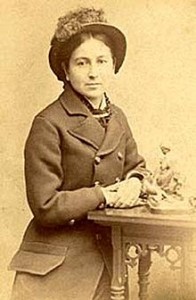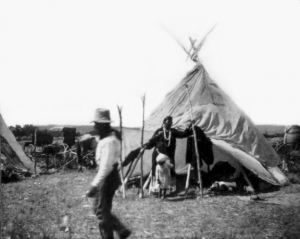Susette “Bright Eyes” La Flesche Tibbles
Biography and Historical Content
Born Inshata Theumba, which translated means Bright Eyes, La Flesche was baptized Susette La Flesche by her French fur trading grandfather. In 1881 she married Thomas H. Tibbles, adding his name to her own. To learn more about her biography and life click here. (Note: As La Flesche is still in the process of being recovered, there is contradictory information in Wikipedia and other biographies both in print and on the web on her early years and Omaha family life.)
La Flesche became involved with Native American advocacy during the Standing Bear trial where she was a translator for the court and for Standing Bear (Ponca). She was able to do this because of her fluency in English, French, and the native languages of the Omaha Tribe and the Ponca Tribe. This jump-started her career as a Native American rights advocate and a Native American author.
Below is a short five minute video about La Flesche and her start as a Native American advocate with the Standing Bear Trial. This short video also helps to show how important recovering this woman can be to the people of her tribe today.
Omaha Legends and Tent Stories
To read the full story with La Flesche’s intro, please click here to the Google books online adaption of Wide Awake, where she originally published this work.
Genres of this Story
Writing Essentials by Regie Routman defines the traditional literature and folktales genre as: “The songs, stories, myths, and proverbs of a people as handed down orally before they were ever written down.”
The tales from the Legends and Tent Stories perfectly fit in with this genre. They are originally oral tales from her tribe that were told to her by her own grandmother as entertainment and lessons for the children.
Close Reading of Native American Literature
Seeing as this tale was not La Flesche’s original creation, nor was it originally in English, readers must remember that things were likely lost from the original piece when transcribed and then translated for the American readers. Different cultures allow for different ways of thinking and thus understanding what the text’s meaning and purpose is. The Western way of looking at this piece would be to consider it nothing more than a child’s tale much like those from the Mother Goose Nursery Rhymes. This simplistic view of the literature ignores the cultural aspects of the Omaha people.


